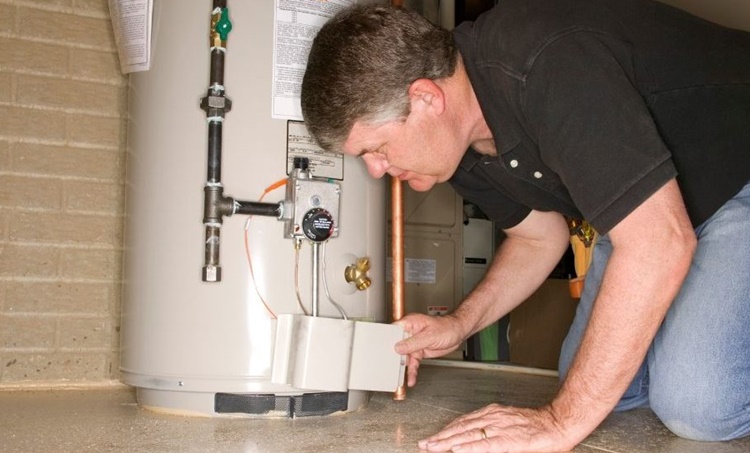Essential Care Techniques for Your Home's Hot Water SystemKey Guidance on Caring for Your Home's Hot Water System
Essential Care Techniques for Your Home's Hot Water SystemKey Guidance on Caring for Your Home's Hot Water System
Blog Article
Nearly everybody is bound to have their own individual idea with regards to Tips on Maintaining a Water Heater.

Hot water is necessary for daily comfort, whether it's for a revitalizing shower or washing meals. To ensure your warm water system runs efficiently and lasts much longer, routine upkeep is vital. This article offers functional pointers and insights on exactly how to keep your home's hot water system to stay clear of interruptions and pricey repairs.
Introduction
Keeping your home's hot water system may seem complicated, yet with a few straightforward steps, you can guarantee it operates efficiently for years to come. This guide covers whatever from understanding your hot water system to DIY upkeep tips and understanding when to call professional assistance.
Importance of Preserving Your Hot Water System
Normal maintenance not only prolongs the life expectancy of your warm water system yet additionally ensures it operates successfully. Neglecting maintenance can cause reduced effectiveness, greater power bills, and even premature failure of the system.
Signs Your Hot Water System Requirements Maintenance
Knowing when your hot water system requires focus can stop significant issues. Look out for indications such as inconsistent water temperature, weird sounds from the heating system, or corroded water.
Comprehending Your Warm Water System
Prior to diving right into upkeep tasks, it's helpful to recognize the standard parts of your hot water system. Usually, this includes the water heater itself, pipes, anode rods, and temperature controls.
Regular Monthly Upkeep Tasks
Routine regular monthly checks can assist catch minor concerns prior to they escalate.
Flushing the Water Heater
Purging your water heater gets rid of debris build-up, boosting efficiency and prolonging its life.
Checking and Replacing Anode Rods
Anode rods prevent corrosion inside the tank. Examining and replacing them when broken is important.
Checking and Changing Temperature Settings
Readjusting the temperature level setups makes certain ideal performance and safety.
Do It Yourself Tips for Upkeep
You can do several maintenance jobs on your own to keep your warm water system in leading problem.
Looking for Leaks
Frequently examine pipes and connections for leaks, as these can bring about water damages and greater expenses.
Evaluating Pressure Relief Valves
Testing the stress safety valve guarantees it operates properly and avoids excessive pressure buildup.
Protecting Pipes
Shielding warm water pipelines lowers warmth loss and can save power.
When to Call a Specialist
While do it yourself upkeep is useful, some issues require professional know-how.
Complex Concerns Needing Specialist Aid
Instances consist of significant leakages, electric troubles, or if your hot water heater is consistently underperforming.
Regular Specialist Upkeep Perks
Specialist upkeep can include complete evaluations, tune-ups, and making sure conformity with security standards.
Conclusion
Normal upkeep of your home's hot water system is crucial for performance, durability, and cost financial savings. By adhering to these ideas and understanding when to seek professional assistance, you can ensure a trustworthy supply of hot water without unforeseen disruptions.
How to Maintain an Instant Hot Water Heater
Before tinkering with your hot water heater, make sure that it’s not powered on. You also have to turn off the main circuit breaker and shut off the main gas line to prevent accidents. Also turn off the water valves connected to your unit to prevent water from flowing into and out of the appliance. 2. When you’re done, you have to detach the purge valves’ caps. These look like the letter “T” and are situated on either side of the water valves. Doing so will release any pressure that has accumulated inside the valves while at the same time avoid hot water from shooting out and burning your skin. 3. When the purge valves’ caps are removed, you have to connect your hosing lines to the valves. Your unit should have come with three hoses but if it didn’t, you can purchase these things from any hardware or home repair shops. You can also get them from retail stores that sell water heating systems. Read the user’s manual and follow it to complete this task properly. When the hosing lines are connected, open the purge port’s valves. 4. You should never use harsh chemical cleaners or solutions when cleaning your unit. Make use of white vinegar instead. It should be undiluted and you’ll probably use about 2 gallons. 5. Now flush your water heater. This task should probably take about 40 minutes. We can’t give you specific directions for this because the procedure is carried out depending on the type, model and brand of your heater. With that being said, refer to the user’s manual. 6. When you’re done draining the unit, you have to turn off the purge port valves again. Remove the hosing lines that you earlier installed on each of the water valves. Put the valve caps (purge port) back in their respective places and be very careful so as not to damage the rubber discs that are found inside these caps. 7. Now that everything’s back in place, check your user’s manual again to find out how to reactivate your water heating system. 8. Once it is working, turn one of your hot water faucets on just to let air pass through the heater’s water supply pipes. Leave the tap on until water flows smoothly out of it. https://www.orrplumbing.com/blog/2014/september/how-to-maintain-an-instant-hot-water-heater/

We hope you enjoyed our section about How to Maintain a Hot Water Heater in a Few Simple Steps. Thanks for finding the time to read through our post. Loved our piece? Please share it. Let somebody else find it. Thanks a lot for your time. Kindly come by our website back soon.
Course Detail Report this page